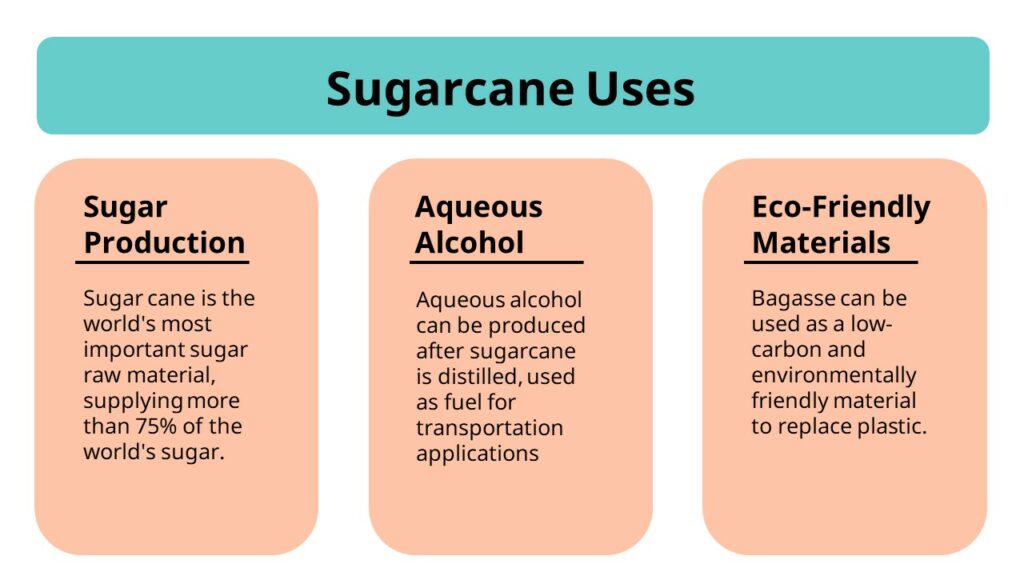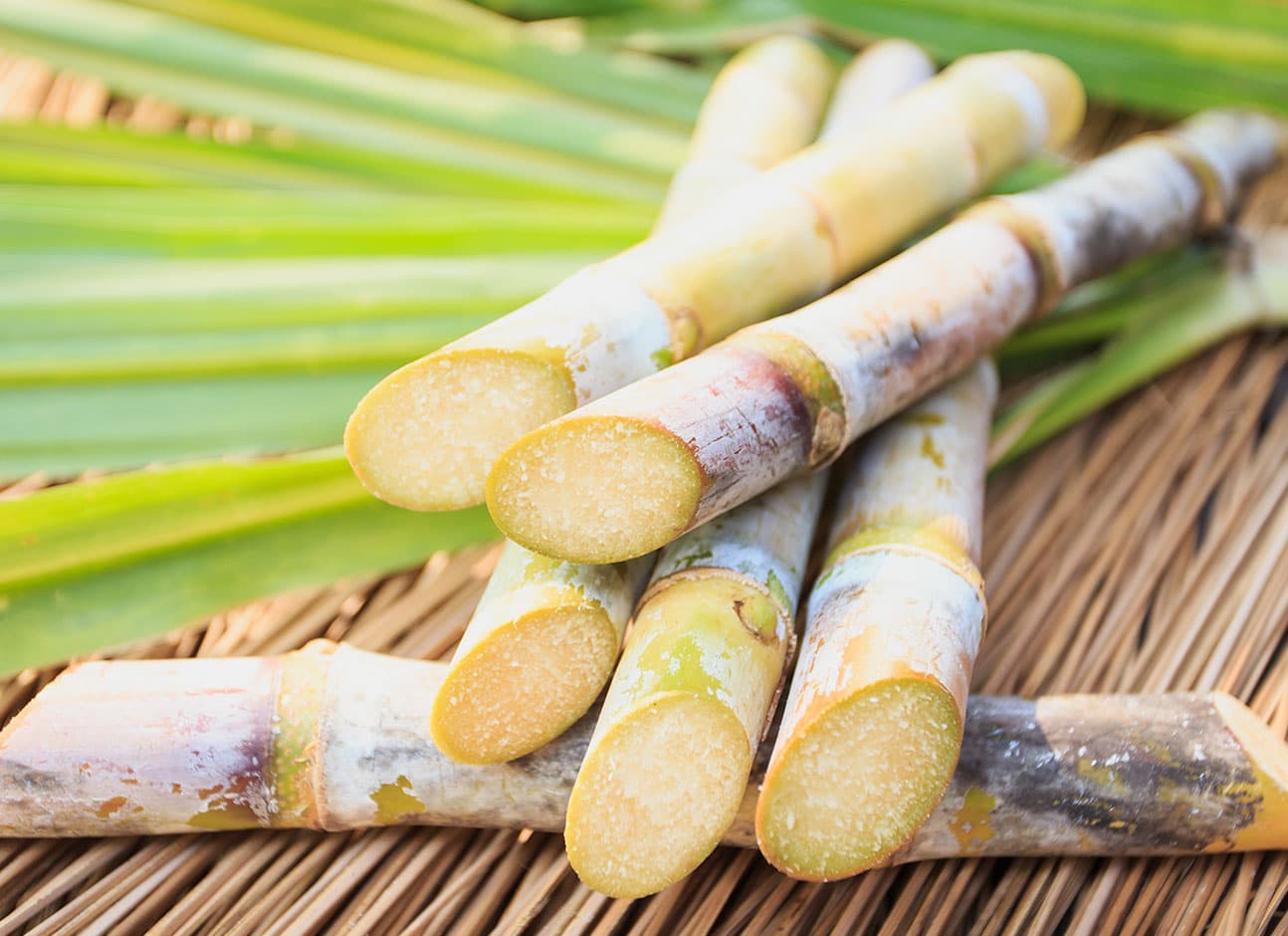All About Sugar Canes: What Are Sugar Canes Utilized For and Their Function in International Farming?
Sugar canes function as a cornerstone of international agriculture, largely acknowledged for their function in sugar production. They likewise add to the production of by-products like molasses and ethanol. These facets not just support various industries however also impact financial security in rural areas. The growing of sugar walking canes encounters substantial ecological obstacles. Understanding their multifaceted role prompts further exploration into their farming methods and sustainability initiatives.
The Agricultural Process of Sugar Walking Cane Farming
Although sugar walking stick farming might differ by region, the fundamental farming process continues to be consistent. The very first step includes selecting high-yielding varieties suitable for regional climates. Prep work of the soil is crucial, often needing tillage and the addition of fertilizers to boost fertility. Growing commonly takes place throughout the rainy season, with farmers using either whole stalks or cuttings to develop new crops.As the plants grow, they require diligent care, consisting of weed control, bug administration, and watering, relying on the ecological problems. Farmers keep track of the sugar walking cane's growth cycle, which generally covers 10 to 24 months, prior to gathering. Harvesting is labor-intensive, commonly conducted by hand or with specialized equipment, ensuring marginal damage to the stalks. Complying with harvest, the walking cane is carried to refining centers. This precise cultivation process not only sustains local economic situations but additionally plays a significant role in worldwide farming techniques, adding to food and power products.
Sugar Manufacturing: From Walking Cane to Crystal
The trip of sugar production starts the moment fresh harvested sugar cane comes to processing facilities. The initial step involves cutting the walking stick and cleaning to prepare it for removal. Using high-pressure rollers, the juice is extracted from the smashed walking stick, causing a wonderful liquid referred to as sugarcane juice. This juice goes through information, where impurities are gotten rid of with the addition of lime and heat.Next, the clarified juice is concentrated by steaming it down to develop a thick syrup. This syrup is after that taken shape by cooling down, allowing sugar crystals to form. The crystallized sugar is separated from the continuing to be syrup, called molasses, via centrifugation.Finally, the sugar crystals are cleaned and dried out, resulting in the acquainted granulated sugar (What Are Sugar Canes Used For). This process transforms raw sugar cane right into an item that is important to numerous culinary and commercial applications, highlighting the significance of sugar in international farming
Biofuels and Sugar Canes: A Lasting Future
As the globe significantly looks for sustainable energy remedies, sugar canes have actually become an encouraging source for biofuels. The biomass originated from sugar walking canes can be exchanged ethanol, a renewable gas option that noticeably reduces greenhouse gas emissions contrasted to fossil gas. This procedure not just offers a cleaner energy source however additionally promotes energy independence for several countries.In enhancement, sugar walking cane growing sustains country economies by developing jobs in both farming and biofuel production industries. The use of sugar walking canes for biofuel production additionally urges agricultural diversification, which can boost soil wellness and decrease dependence on solitary plants. The spin-offs of sugar walking cane processing can be made use of for electrical power generation, in addition adding to a lasting power cycle. As countries venture to meet renewable power targets, sugar walking sticks are positioned to play an important duty fit an extra sustainable future in the biofuel landscape.

The Function of Sugar Canes in Beverage Production
Sugar walking canes play a significant duty in beverage manufacturing, offering as a primary ingredient in rum and contributing to the sweet taste of many soft beverages. In addition, their all-natural juices are used in numerous drinks, enhancing flavor and appeal. This flexibility highlights the relevance of sugar walking canes in the worldwide drink industry.
Sugar Walking Cane in Rum
Rum manufacturing is delicately connected to the growing of sugar walking stick, an essential crop that gives the needed fermentable sugars required for fermentation. This procedure begins with the extraction of juice from collected sugar canes, which is then either fermented straight or processed right into molasses. Yeast is contributed to transform the sugars into alcohol, causing a diverse variety of rum styles, from light to dark ranges. The geographical region where the sugar cane is expanded greatly influences the taste profile of the rum, with elements such as dirt type and climate playing vital roles. Countries like Barbados, Jamaica, and Cuba are renowned for their rum production, reflecting the historical and cultural relevance of sugar walking cane within the international drink industry.
Soft Drinks Sweetener Source

Natural Juice Manufacturing Uses
In addition to its significant duty in soft beverage manufacturing, sugar cane is additionally pivotal in the natural juice sector. The juice removed from sugar cane, referred to as walking stick juice, is celebrated for its natural sweetness and special taste profile. This juice is generally taken in fresh in numerous regions, particularly in exotic countries, where it is delighted in as a renewing drink. Furthermore, cane juice acts as a base component in a series of all-natural fruit juices and healthy smoothies, boosting both taste and dietary value. Its all-natural homes make it an attractive alternative to fabricated sugar, appealing to health-conscious consumers. In general, sugar walking stick's flexibility in juice production highlights its importance in modern-day beverage offerings worldwide.
Developments in Sugar Walking Cane Byproducts
Advancements in sugar cane byproducts are leading the way for lasting solutions in different industries. Biofuels acquired from sugar walking cane use an alternative energy resource, while developments in lasting packaging are decreasing reliance on conventional materials. These growths highlight the versatility and capacity of sugar walking stick past its key usage in drink manufacturing.
Biofuels From Sugar Cane
Just how can the results of sugar cane add to lasting energy options? The conversion of sugar walking stick right into biofuels provides an encouraging avenue for renewable resource. By making use of the fibrous deposit, called bagasse, producers can produce bioethanol via fermentation procedures. This bioethanol can function as a lasting choice to nonrenewable fuel sources, minimizing greenhouse gas emissions and dependence on non-renewable resources. Furthermore, molasses, another byproduct, can be fermented to produce biofuels, optimizing resource performance. The energy created from sugar cane not just supplies a cleaner gas resource yet also improves the general economic stability of sugar manufacturing. By integrating biofuel manufacturing into their procedures, sugar walking cane markets can play an essential function in progressing sustainable energy remedies globally.
Lasting Packaging Solutions
Lasting packaging solutions are progressively being established from sugar walking cane by-products, showcasing the convenience of this agricultural staple. Advancements such as biodegradable plastics originated from bagasse, the fibrous deposit left after juice removal, are gaining traction. These materials provide an environment-friendly choice to traditional plastics, reducing dependence on fossil fuels and decreasing carbon impacts. Additionally, sugar cane-based packaging is compostable, damaging down normally without hurting the environment. Firms are currently checking out these alternatives to straighten with customer need for sustainability. As recognition of plastic pollution grows, the adoption of sugar cane-derived product packaging is expected to rise, positioning sugar walking canes as a vital player in the change to greener product try these out packaging solutions in numerous industries.
Economic Influence of Sugar Walking Cane Farming

Sugar walking cane farming has deep origins in lots of economic situations, its economic influence prolongs far past farming manufacturing. This crop acts as a substantial income for countless farmers worldwide, specifically in creating countries where farming is a primary resources. Sugar cane adds to regional economies through job development in harvesting, handling, and cultivation. The industry additionally stimulates growth in relevant markets such as transportation, equipment production, and food processing.Furthermore, sugar walking stick is an essential gamer in worldwide trade, influencing global markets and costs. Nations that generate sugar walking cane often count on exports to improve their financial stability. The byproducts of sugar walking cane, such as ethanol and molasses, branch out revenue streams for farmers and include value to the agricultural field. On the whole, the economic ramifications of sugar walking stick farming are profound, impacting not only farmers but likewise whole areas and national economies.
Environmental Considerations in Sugar Cane Farming
While sugar walking cane farming plays a necessary role in many economic situations, it also increases substantial ecological concerns that can not be overlooked. The extensive use plant foods and pesticides in sugar walking stick cultivation often results in dirt deterioration and water pollution. Overflow from these chemicals can pollute neighboring water bodies, hurting aquatic environments. Furthermore, the monoculture methods common in sugar cane farming minimize biodiversity, making communities a lot more prone to insects and diseases.Deforestation is another critical concern, as land is often cleared to give way for sugar haciendas, resulting in environment loss for wild animals and raised carbon emissions. In addition, the high water consumption needed for sugar walking stick watering can strain regional water sources, particularly in arid areas. As worldwide need for sugar continues to rise, dealing with these environmental difficulties directory ends up being critical to assure lasting techniques in sugar walking cane cultivation.
Often Asked Concerns
What Are the Nutritional Advantages of Sugar Walking Stick?
The nutritional advantages of sugar walking stick largely include its high carb web content, giving power. Furthermore, it has vitamins, minerals, and antioxidants that might sustain total wellness, though small amounts is crucial as a result of its sugar content.
Exactly How Does Sugar Walking Stick Affect Citizen Ecosystems?
Sugar walking cane growing can substantially influence regional ecosystems by changing land usage, affecting biodiversity, and needing significant water sources. Furthermore, it may cause dirt deterioration and pesticide overflow, disrupting bordering environments and wildlife populaces.
What Is the History of Sugar Walking Stick Cultivation?

Are There Alternatives to Sugar Walking Stick for Sugar Manufacturing?
Alternatives to sugar walking stick for sugar manufacturing include sugar beets, corn, and various tropical plants like sorghum and agave (What Are Sugar Canes Used For). These plants supply diverse sources of sweet taste, each with distinctive farming demands and environmental impacts
Just How Do Climate Patterns Influence Sugar Cane Yields?
Climate patterns considerably influence sugar walking cane returns through temperature fluctuations, rains quantities, and seasonal cycles. Drought or excessive rains can hinder development, while ideal conditions enhance photosynthesis, eventually impacting the quantity and quality of the harvest. The journey of sugar production begins the minute freshly harvested sugar walking cane gets here at refining facilities. The taken shape sugar is separated from the staying syrup, known as molasses, with centrifugation.Finally, the sugar crystals are cleaned and dried, resulting in the acquainted granulated sugar. Rum manufacturing is elaborately connected to the growing of sugar walking stick, an essential plant that offers the necessary fermentable sugars required for fermentation. i thought about this In addition, the monoculture practices widespread in sugar walking stick farming minimize biodiversity, making environments much more prone to parasites and diseases.Deforestation is an additional crucial concern, as land is usually gotten rid of to make method for sugar ranches, leading to environment loss for wildlife and raised carbon discharges. Alternatives to sugar cane for sugar manufacturing include sugar beets, corn, and various exotic plants like sorghum and agave.